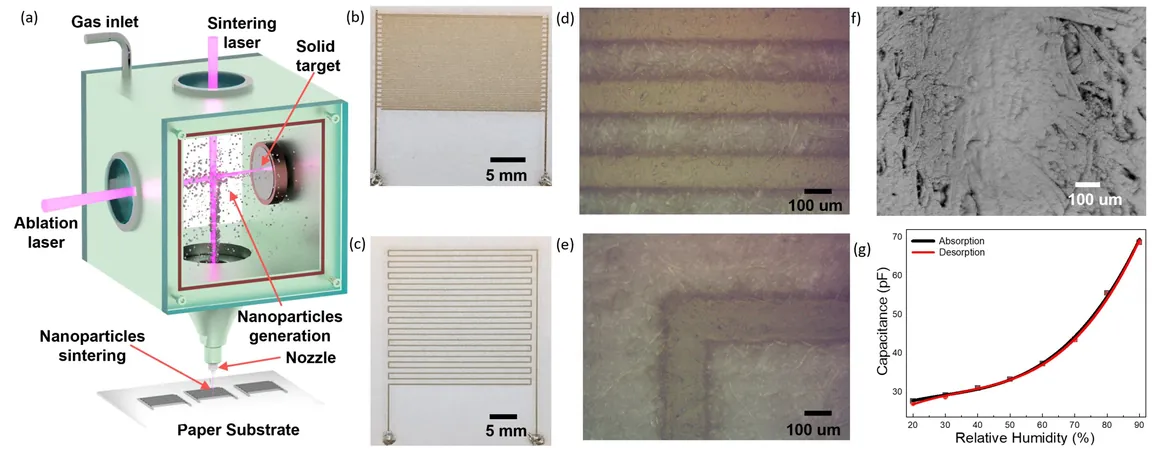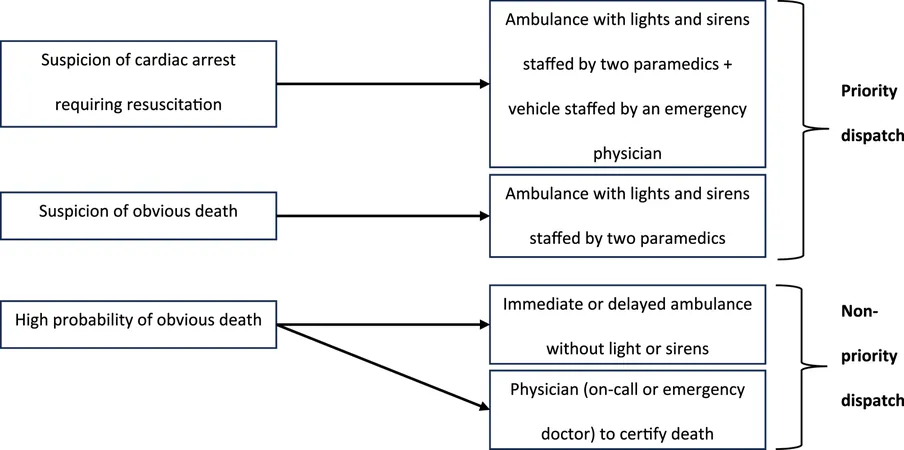
Eco-Friendly Paper Sensors Set to Revolutionize Agricultural Monitoring!
2025-01-21
Author: Olivia
Introduction
In a world where sustainable farming practices are paramount, the emergence of eco-friendly technologies is reshaping the agricultural landscape. Greenhouses and farms that open their doors to consumers seeking locally sourced fruits, vegetables, and meats have become vital to enhancing food productivity. Farmers are now more than ever in need of innovative solutions to optimize crop growth and maintain the freshness of stored produce amidst varying environmental conditions.
The Role of Smart Sensor Technology
Enter smart sensor technology, a game-changer in monitoring crucial factors like temperature and humidity—two key elements that significantly influence agricultural yield. Researchers at Auburn University in Alabama have recently developed groundbreaking paper-based sensors that promise to deliver precise readings while being both affordable and environmentally sustainable.
Research Findings
Published in the esteemed Journal of Laser Applications, their findings highlight the development of these remarkable sensors that track temperature and humidity in diverse cultivation settings. Masoud Mahjouri-Samani, one of the lead authors, emphasizes the challenges that traditional sensor technologies face. "In recent years, agriculture has been heavily impacted by extreme fluctuations in environmental factors such as humidity and temperature, underscoring the need for innovative solutions that enhance productivity with minimal environmental impact," he noted.
Advantages of Paper-Based Sensors
Traditional sensors often rely on non-biodegradable plastics, which pose significant waste concerns. However, the research team has turned to paper—an abundant and biodegradable alternative—that’s proving to be not just functional but also sustainable. Using innovative print technologies such as aerosol-jet and inkjet printing, the scientists crafted sensors by applying silver lines onto four different types of commercially available paper through a technique called dry additive nanomanufacturing.
How the Sensors Work
These sensors operate by measuring changes in capacitance and resistivity within their printed electrodes. As the paper absorbs moisture from the environment, a measurable shift in capacitance reflects the relative humidity, while temperature detection is achieved through increased resistance in the metallic conductor as temperatures rise.
Impressive Results
The results are impressive! The team found that their sensors reliably detected relative humidity levels ranging from 20% to an impressive 90% and temperature variations from 25°C to 50°C. Moreover, these sensors are not only affordable but also reusable, offering a practical solution to the challenges faced by modern farmers. When they have served their purpose, these biodegradable sensors can be disposed of safely, aligning with environmental sustainability goals.
Conclusion
"By combining cutting-edge techniques like dry additive nanomanufacturing with biodegradable materials, this research represents a significant leap towards responsible technology development in agriculture," Mahjouri-Samani stated. "This approach has the potential to transform smart farming practices by allowing for the meticulous monitoring of essential factors critical to plant growth." With food insecurity and environmental degradation on the rise, the need for sustainable agricultural practices has never been more urgent. These innovative paper sensors may not just help farmers optimize yields—they could be the key to ensuring a sustainable and prosperous future for global agriculture. Keep an eye on this revolutionary technology; it might just change the way we grow and consume our food!









 Brasil (PT)
Brasil (PT)
 Canada (EN)
Canada (EN)
 Chile (ES)
Chile (ES)
 Česko (CS)
Česko (CS)
 대한민국 (KO)
대한민국 (KO)
 España (ES)
España (ES)
 France (FR)
France (FR)
 Hong Kong (EN)
Hong Kong (EN)
 Italia (IT)
Italia (IT)
 日本 (JA)
日本 (JA)
 Magyarország (HU)
Magyarország (HU)
 Norge (NO)
Norge (NO)
 Polska (PL)
Polska (PL)
 Schweiz (DE)
Schweiz (DE)
 Singapore (EN)
Singapore (EN)
 Sverige (SV)
Sverige (SV)
 Suomi (FI)
Suomi (FI)
 Türkiye (TR)
Türkiye (TR)
 الإمارات العربية المتحدة (AR)
الإمارات العربية المتحدة (AR)